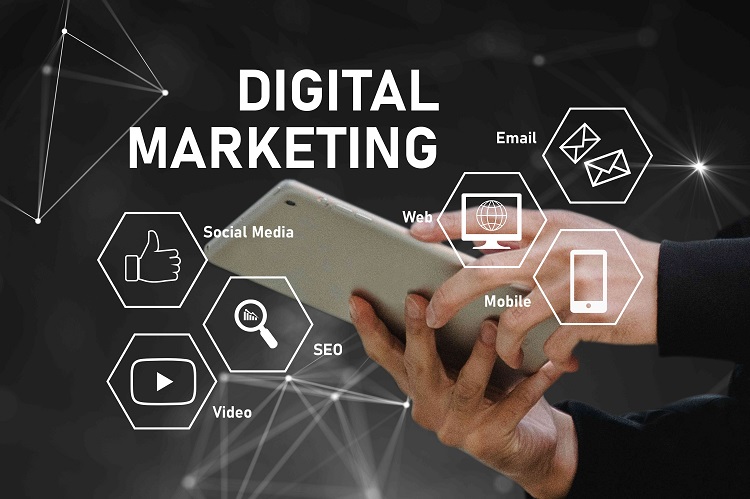In the ever-evolving world of digital marketing, staying ahead of trends is crucial for businesses aiming to maintain visibility and relevance. Predictive analytics, powered by artificial intelligence (AI), is transforming how companies approach search engine optimization (SEO). This technology forecasts future trends and provides actionable insights to optimize strategies effectively. For those seeking to maximize their online presence, embracing AI-driven tools is a game-changer. Whether you’re a small business or a corporation leveraging professional SEO support in San Diego, predictive analytics can help you stay ahead in the competitive digital landscape. Let’s dive into how this innovative approach reshapes SEO and drives better results.
Table of Contents
What is Predictive Analytics in SEO?
Predictive analytics involves using AI and machine learning to analyze historical data and predict future outcomes. In the context of SEO, it allows marketers to forecast keyword trends, user behavior, and search engine algorithm changes. By understanding what will likely happen, businesses can proactively adapt their strategies to maintain a competitive edge.
For example, predictive tools analyze massive datasets to determine seasonal keyword trends, shifts in user preferences, and emerging topics in your industry. This enables marketers to align content and campaigns with future demands, ensuring their efforts remain relevant and effective.
How Predictive Analytics Enhances SEO Strategies
1. Anticipating Keyword Trends
One of the core components of SEO is keyword optimization. Predictive analytics tools like SEMrush and Google Trends allow marketers to identify keywords poised to gain popularity in the coming months. By targeting these keywords early, businesses can secure higher rankings and attract more organic traffic before competition intensifies.
2. Optimizing Content Planning
Content creation is more effective when aligned with what users will search for in the future. Predictive analytics provides insights into trends, helping marketers craft relevant, timely content. For instance, if data indicates a rising interest in a specific product or service, businesses can develop blog posts, videos, or guides addressing that interest.
3. Improving User Experience (UX)
User behavior constantly changes, and predictive analytics helps identify patterns in how users interact with websites. By understanding future user preferences, businesses can enhance website design, navigation, and overall experience to keep visitors engaged.
4. Adjusting to Algorithm Changes
Search engines like Google frequently update their algorithms, affecting how content is ranked. Predictive analytics tools analyze historical algorithm changes to forecast future adjustments. This enables marketers to prepare and adapt strategies, reducing the risk of sudden drops in rankings.
Tools That Make Predictive Analytics Possible
AI-powered tools play a significant role in making predictive analytics accessible and effective. Here are some of the most popular tools:
- Google Trends: Provides insights into search volume and emerging topics over time.
- Ahrefs and SEMrush: Offer detailed keyword research, competitive analysis, and trend forecasting.
- BrightEdge: Combines AI and big data to predict content performance and recommend optimizations.
- Tableau: Visualizes predictive data for easier decision-making.
These tools empower marketers to make data-driven decisions, ultimately improving their SEO performance and ROI.
Benefits of Predictive Analytics in SEO
1. Proactive Strategy Development
By predicting future trends, businesses can plan and execute strategies in advance, staying ahead of competitors.
2. Cost Efficiency
Focusing efforts on high-potential keywords and trends reduces wasted resources on ineffective tactics.
3. Enhanced Customer Engagement
By understanding user behavior and preferences, businesses can create personalized content and experiences that resonate with their audience.
4. Increased Conversion Rates
Targeting the right keywords and crafting relevant content improves the likelihood of converting visitors into customers.
Real-World Applications of Predictive Analytics in SEO
Case Study 1: Seasonal Trends
A retail company noticed an annual spike in demand for winter clothing during October. They identified related keywords using predictive analytics and optimized their content months in advance. As a result, their website traffic increased by 35% during the peak season.
Case Study 2: Local SEO Optimization
A restaurant chain worked with professional SEO services San Diego to predict local search trends. By targeting keywords like “best seafood near me” and optimizing their Google Business Profile, they saw a 25% increase in local search visibility.
Ethical Considerations in Predictive Analytics
While predictive analytics offers numerous advantages, it’s essential to use it responsibly. Businesses must:
- Protect User Data: Ensure compliance with privacy laws and maintain transparency about data usage.
- Avoid Over-Reliance on Automation: Human oversight is crucial to interpreting AI recommendations accurately and aligning them with brand values.
- Promote Ethical Practices: Avoid exploiting predictive insights to manipulate user behavior or spread misinformation.
The Future of Predictive Analytics in SEO
The role of AI in predictive analytics will only grow as technology advances. Here are some trends to watch:
- Voice Search Optimization: Predictive tools will help marketers tailor content for voice queries expected to dominate search behavior.
- Real-Time Adaptation: Future tools may provide instant adjustments based on live user data, making SEO strategies more agile.
- Deeper Integration with Other Marketing Channels: Predictive analytics will connect with email, social media, and paid advertising for seamless multi-channel campaigns.
Conclusion
Predictive analytics powered by AI revolutionizes SEO by providing actionable insights that help businesses stay ahead of digital marketing trends. Adopting this approach is critical to gaining a competitive edge for companies—whether relying on in-house teams or professional SEO support in San Diego. By leveraging predictive tools and strategies, businesses can anticipate changes, optimize their efforts, and deliver content that engages and converts. Embracing predictive analytics today ensures a thriving digital presence tomorrow.

